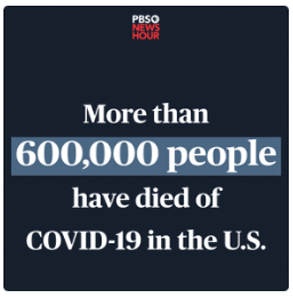Health Plan Weekly
-
Quality of Diabetes Care Declines as Health System Grows More Fragmented
In a series of articles in the July issue of the health policy journal Health Affairs, researchers evaluated diabetes care in the United States through several lenses, including care management, prevention, interventions, health equity, quality measures and value-based payment design. Several of them also spoke at a July 19 policy briefing in which a key message was that the fragmented U.S. health system is contributing to a plateau in improving diabetes care — and value-based diabetes payment programs may be causing still more fragmentation.
Despite remarkable advances in clinical understanding and treatments for diabetes, the U.S. has stagnated over the past decade in preventing and managing the condition, said Mohammed Ali, a professor in the Hubert Department of Global Health at Emory University. Ali served as the theme advisor for Health Affairs’ diabetes-focused issue and also was a co-author of the issue’s overview article, “Diabetes And The Fragmented State Of US Health Care And Policy.”

-
Prediabetes Population Soars, Prevention Programs Stay Unused
Although the prediabetes prevalence rate increased by 4.8 percentage points between 2010 and 2020, access to the National Diabetes Prevention Program remained limited, with only 3% of people with prediabetes participating in the program, according to a recent Health Affairs study. The researchers estimated 13.5% prevalence of diagnosed prediabetes and 30% of potentially undiagnosed prediabetes in 2020, using two national surveys.
The National Diabetes Prevention Program — an intensive 12-month, group-based, lifestyle intervention to prevent or delay type 2 diabetes — remained underused and undersupplied. Only 5% of patients diagnosed with prediabetes were referred to such a program. In general, men were more likely to be referred but less likely to participate than women.
-
News Briefs: JPMorgan Chase Takes $30 Million Position in Centivo
Morgan Health, JPMorgan Chase Co.’s health care venture arm, will invest $30 million in startup ERISA carrier Centivo Corp. The investment is part of Centivo’s Series B-1 financing round. Centivo’s strategy is based on value-based care arrangements with providers. A Morgan Health press release claimed that “among mid-size and large employers, Centivo’s typical client has saved 15 to 30 percent annually compared to traditional insurance models. In addition, members’ medical and pharmacy out-of-pocket cost has, on average, been reduced to less than $350 per person per year. These cost reductions have occurred all while increasing primary care utilization by more than 30 percent and strengthening quality through an advanced primary care-centered clinical model.” Centivo operates in 13 states. JPMorgan launched Morgan Health following the collapse of Haven, a health care joint venture with Amazon.com, Inc. and Berkshire Hathaway Inc.
-
Employer Purchasers Mull Virtual-First Plans, Virtual Primary Care
More purchasers than ever are offering virtual primary care to their members and may be on the verge of launching “virtual-first” plans, according to recent surveys by benefits consultants and brokers. However, health care experts tell AIS Health, a division of MMIT, that there’s an important distinction between the availability of such options to members and actual uptake — and point out purchasers aren’t yet convinced that virtual offerings will reduce costs or improve the member experience.
Recent benefit surveys show increasing interest from employer purchasers in the availability of virtual primary care — which places a member with a telehealth primary care provider inside a traditional health benefit — and virtual-first plans, which are benefit designs that require members to use some sort of telehealth option (usually a telehealth PCP) as their primary point of contact with the health care system.

-
Payers, Government Are Increasing Focus on Health Inequities
Health insurers, states and the federal government are beginning to take more seriously health inequities, according to experts who spoke with AIS Health, a division of MMIT, as the issue becomes a hot topic due to the health and financial costs caused by disparities in health care access and outcomes.
Health inequities related to race, socioeconomic status and sex/gender account for $320 billion in annual health care spending for five high-cost diseases, according to a Deloitte report released on June 22. Deloitte actuaries project that could increase to $1 trillion by 2040 and lead to an average $2,000 increase in health spending per person in the U.S. if those issues are not addressed. The researchers examined the costs of health inequities related to the treatment — or lack thereof — of breast cancer, diabetes, colorectal cancer, asthma and coronary heart disease.












